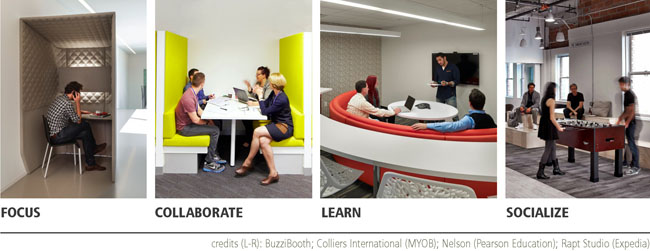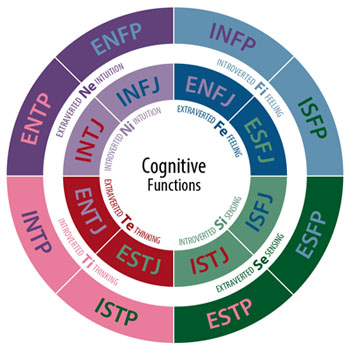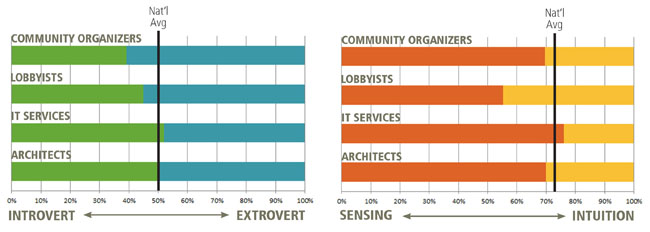Innovation at Work: The Personality Project, Part 2
Last week, we introduced our study of personality types and workplace design. In today’s post, we look at the personality traits we considered relevant and show how they measured up.
Part 2: Putting Personality to the Test
ACTIVITY SETTINGS AND PERFORMANCE-BASED DESIGN
To facilitate the varied types of work that people typically perform throughout the day, workplaces are providing a range of Activity Settings with different technical and physical attributes. This is a concept that was developed in the 1980s but is now gaining new traction in response to the developments in the workplace over the past decade, such as the growing realization that workers are not able to concentrate effectively in the open office without spaces that are specifically designed for this purpose.
The four generally accepted modes of work are: Focus, Collaborate, Learn, and Socialize.

Our study of personality types focused on the Activity Settings that are designed for these four modes of work.
PERSONALITY TYPE ASSESSMENT
As individuals, we have preferences for how we interact with others, how we view the world, and how we make decisions. These personality characteristics, or preferences, can be identified using the Myers-Briggs Type Indicator. The four personality dichotomies are the constituent parts of each individual’s personality type.

Extroversion and Introversion relate to how a person interacts with the outside world. Extroverts tend to be more outwardly focused, drawing energy from interactions with others, while introverts are inwardly focused, and draw their energy from inward reflection and contemplation.
Sensing and Intuition relate to how an individual interprets the information they receive from the outside world. Sensing individuals tend to respond well to specific data and solid facts, while intuitive types prefer abstract concepts and generalities.
For this investigation, we chose to explore the Extrovert / Introvert [E/I] and the Sensing / Intuition [S/N] dichotomies, as they appeared to be the most pertinent characteristics to workplace design.
METHODOLOGY
We generated an 18-question survey to gauge the personality characteristics of open office workers, and their preference for different types of space, organization, and physical forms.
The survey was administered to four separate companies in various industries that we felt would provide a good range of different personality types. The survey was also circulated to individuals outside of these companies, and drew a total of 200 responses.
While most companies tested near the national average, a few showed strong tendencies toward one characteristic over another.

Every company is comprised of individuals, but the character of the overall organization is defined by the personalities of the group. As the personalities lean in one direction, it is reasonable to assume that the overall group will benefit from more informed decision-making based on the predominant traits of the constituent individuals. By using this information in the development of design solutions, we can provide spaces that are better suited to the occupants, and thus more comfortable and productive.